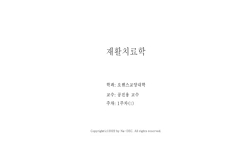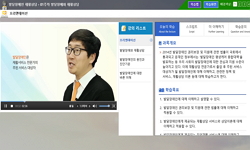Purpose: This study was aimed to investigate the differences in the co-contraction index of ankle muscles’ activities and proposed the rehabilitation methods in terms of special physical education based on the clinical findings. Methods: A total of ...
http://chineseinput.net/에서 pinyin(병음)방식으로 중국어를 변환할 수 있습니다.
변환된 중국어를 복사하여 사용하시면 됩니다.
- 中文 을 입력하시려면 zhongwen을 입력하시고 space를누르시면됩니다.
- 北京 을 입력하시려면 beijing을 입력하시고 space를 누르시면 됩니다.

A Proposal for Lower-Extremity Motor Function Rehabilitation Based on Preliminary Observation on the Abnormal Co-contraction Patterns of Ankle Muscles in Post-stroke Patients
한글로보기https://www.riss.kr/link?id=A106951701
- 저자
- 발행기관
- 학술지명
- 권호사항
-
발행연도
2020
-
작성언어
Korean
- 주제어
-
등재정보
KCI등재
-
자료형태
학술저널
-
수록면
55-61(7쪽)
- 제공처
-
0
상세조회 -
0
다운로드
부가정보
다국어 초록 (Multilingual Abstract)
Purpose: This study was aimed to investigate the differences in the co-contraction index of ankle muscles’ activities and proposed the rehabilitation methods in terms of special physical education based on the clinical findings. Methods: A total of ten participants (5 stroke patients and 5 normal adults) were participated in this study. Their two ankle muscles (tibialis anterior and gastrocnemius muscles) were measured by electromyography (EMG) during the gait cycle and then, the muscle activities were calculated as a co-contraction index (CCI). Finally, the indexes between stroke patients and normal adults were compared. Results: As a result, CCI during the stance phase in the gait cycle was significantly higher in stroke patients than normal adults (p=.047). In addition, each group showed a significant difference in CCI between the stance and swing phase through within-group analysis (p=.043). Conclusion: In this study, stroke patients showed a higher CCI during the gait cycle, especially, in the stance phase. In conclusion, when considering the higher CCI would provide double-sidedness; 1) a demerit is the higher CCI would decrease in the mobility of ankle joint, whereas, 2) a merit is to increase in the stability of the ankle joint to protect fall-down, I proposed that as a lower-extremity rehabilitation method, sports activity, and aerobic exercise, using an online virtual reality technology will be necessary to ensure the safety of sports game as well as the enjoyment to maximize the quality of post-stroke life. Therefore, professionals in the field of special physical education should actively enlarge their education and development skills to the field of new biotechnology.
목차 (Table of Contents)
- Abstract
- Ⅰ. 서론
- Ⅱ. 연구 방법
- 1. 연구 대상자
- 2. 측정도구 및 실험절차
- Abstract
- Ⅰ. 서론
- Ⅱ. 연구 방법
- 1. 연구 대상자
- 2. 측정도구 및 실험절차
- 3. 통계분석
- Ⅲ. 연구 결과
- Ⅳ. 고찰
- Ⅴ. 결론
- 참고문헌
동일학술지(권/호) 다른 논문
-
대학 축구선수의 스포츠 손상 및 재발 경험 실태조사에 따른 팀 훈련법에 관한 고찰
- 대한스포츠물리치료학회
- 도진학
- 2020
- KCI등재
-
뇌졸중 환자의 하지 운동기능 재활을 위한 발목근육 비정상적 동시 활성패턴 예비관찰 및 운동재활방안 제언
- 대한스포츠물리치료학회
- 임종민
- 2020
- KCI등재
-
불안정지지면과 안정지지면에서의 코어 운동이 20대 정상 성인의 체성분 변화에 미치는 영향
- 대한스포츠물리치료학회
- 최재용
- 2020
- KCI등재
-
승마기구의 훈련 속도가 정상 여성 성인의 복압에 미치는 영향
- 대한스포츠물리치료학회
- 김동훈
- 2020
- KCI등재





 eArticle
eArticle






